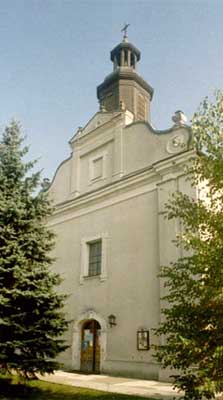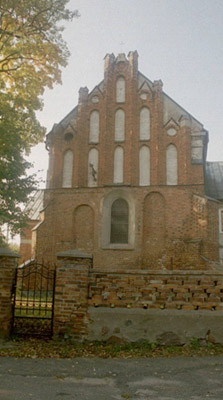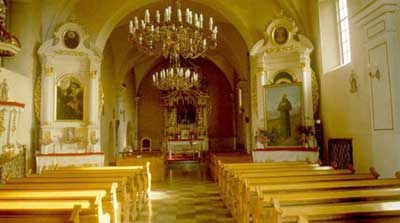 |
 |

|
The Lutheran parish of Wyszogród |
||
|
Name: |
Wyszogród / Hohenburg |

Former Lutheran Church of Wyszogród - Photo by: Annegret Krause, 2002 |
|
Location: |
On the right bank of the Vistula opposite the mouth of the river Bzura. |
|
|
Established: |
1805 |
|
|
Pastors: |
Christian Mielke (1805-1829), Ignatius Karl Wilhelm Boerner (1829-1837), Wilhelm Alberti (1837-1867), Edmund Alberti (1867-1886), Peter Hodel (1887-1890), Ernst Daniel Behse (1891-1913), Konrad Nahrgang (1920-1939), Arthur Wilhelm Wittmeyer (1940-1945) |
|
|
History: |
Starting in the second half of the 18th Century Swabians from Wuerttemberg and Silesians settled in the villages around Wyszogród and in the cities Bodzanow and Czerwinsk. About 1860 there were about 17 settlements that showed only Lutheran inhabitants. The most important were: Śladów, Königsdorf-Wiciejewo, Raków, Kępa Niemiecka, Drwały, Bulkowo and Boguszyn. The Lutherans living in the Vistula valley were taken care of by the pastors from Iłów. However the religious provision for the people living in the more remote areas was bad. |
|
|
In 1805 the Prussian king Frederic William III. founded the parish of Wyszogród. The parish was entrusted with the former Franciscan church. In 1843 a brick parsonage was built. The area of the parish was huge and thus difficult to care for. So in 1846 the Filial Secymin and in 1840 the Filial Płońsk were founded. Many members of the parish emigrated to Volhynia and Russia. In September 1905 the parish celebrated its 100th anniversary. During the First World War the bigger part of the 2000 members of the parish was deported to Russia. |

Backside of the Church with part of the former monastery - Photo by: Annegret Krause, 2002 |
|

Interior of the Church - Photo by: Annegret Krause, 2002 |
||
|
Sources: |
Eduard Kneifel: Die evangelisch-augsburgischen Gemeinden in Polen 1555-1939 |
|